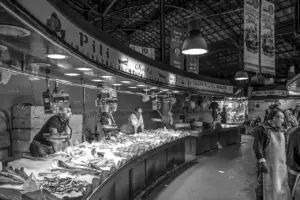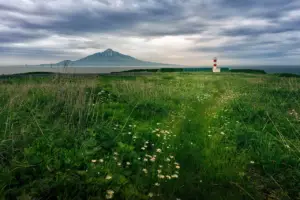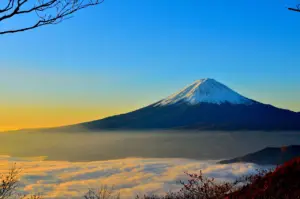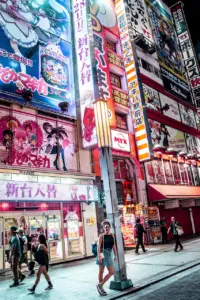Hokkaido, the northernmost island of Japan, is renowned for its stunning natural beauty, with its vast landscapes and picturesque gardens. The region attracts tourists from all around the world, who come to enjoy its serene surroundings and tranquil atmosphere. Hokkaido is home to a plethora of beautiful gardens that offer a relaxing escape from the hustle and bustle of the city.
This article will introduce seven of Hokkaido’s most beautiful gardens that are perfect for those seeking a peaceful and serene environment. Each of these gardens has its unique features and attractions, making them well worth a visit.
Whether you’re a nature lover, a plant enthusiast, or simply someone who enjoys the calming effects of a beautiful garden, Hokkaido has something to offer everyone. So, let’s embark on a journey through seven of Hokkaido’s most stunning gardens, and discover the beauty and tranquility they have to offer.
Key Takeaways
- Hokkaido is renowned for its natural beauty and tranquil environment, making it an ideal destination for tourists seeking a peaceful escape.
- The region boasts numerous stunning gardens that offer a serene and relaxing atmosphere, including the Hakodate Tropical Botanical Garden, Asahiyama Memorial Park, Sapporo Botanic Garden, and Matsumae Park.
- Hokkaido’s gardens showcase a diverse range of flora, including exotic plants, cherry blossoms, irises, and peonies, as well as traditional Japanese gardens that embody the importance of harmony between humans and nature.
- Visitors can also explore Hokkaido’s rich cultural heritage by visiting historic castle ruins and learning about traditional farming practices at Ueno Farm.
Hakodate Tropical Botanical Garden
The Hakodate Tropical Botanical Garden, located in the southern region of Hokkaido, boasts an impressive collection of exotic plants and provides visitors with a serene atmosphere to appreciate the natural beauty of the surroundings.
The garden spans over an area of 33 hectares and was established in 1894. It is home to over 3,000 species of plants, including 1,500 tropical plants from all over the world, such as ferns, orchids, and cacti.
The garden is divided into different sections, including the Tropical Plant House, which houses a variety of tropical plants, and the Rare Plant House, which showcases endangered plants from all over the world.
The Hakodate Tropical Botanical Garden is also known for its cherry blossom trees, which bloom in late April. Visitors can take a leisurely stroll along the garden’s cherry blossom-lined paths, admiring the vibrant pink blooms against the backdrop of the lush greenery.
In addition to its impressive collection of plants, the garden also offers a variety of activities for visitors, including guided tours, workshops, and seasonal events.
The garden’s tranquil atmosphere and diverse plant collection make it a must-visit destination for nature lovers and plant enthusiasts alike.
Asahiyama Memorial Park
Located in the city of Asahikawa, Asahiyama Memorial Park is a serene oasis amidst the urban landscape, offering visitors a peaceful escape from the hustle and bustle of city life.
The park spans over 13 hectares and features a variety of gardens, including a Japanese garden, a rock garden, a rose garden, and a conifer garden.
Each garden is designed with a specific theme in mind, and visitors can enjoy the beauty of seasonal flowers and foliage throughout the year.
One of the most popular attractions in Asahiyama Memorial Park is the English Garden, which features a large lawn area, a pond, and a variety of colorful flowers and shrubs.
Visitors can take a leisurely stroll along the winding paths or simply relax on one of the benches while admiring the picturesque scenery.
The park also has a small museum dedicated to the life and works of Dr. Toru Nakayama, a famous local botanist who played a key role in establishing the park.
Overall, Asahiyama Memorial Park is a must-visit destination for anyone seeking a peaceful and rejuvenating experience amidst beautiful gardens.
Sapporo Botanic Garden
Situated on the outskirts of Sapporo, the Sapporo Botanic Garden is a vast expanse of over 18 hectares that houses a diverse collection of plants from around the world. The garden is divided into several themed areas, including the Japanese Garden, Herb Garden, Alpine Garden, and the Tropical Glasshouse.
The Japanese Garden is an oasis of calm with a tranquil pond, traditional tea house, and meticulously pruned trees and shrubs. In contrast, the Tropical Glasshouse is a humid and steamy environment that houses exotic plants such as orchids, bromeliads, and carnivorous plants.
Visitors to the Sapporo Botanic Garden can expect to experience a range of emotions as they explore the various gardens and exhibits. Here are three examples:
-
Serenity: The Japanese Garden is a peaceful and serene space that encourages visitors to slow down, relax, and appreciate the beauty of nature.
-
Wonder: The Tropical Glasshouse is a magical world filled with unusual and exotic plants that are sure to leave visitors in awe.
-
Delight: The Herb Garden is a fragrant and lively space that stimulates the senses with the aromas of lavender, rosemary, and other herbs. Visitors can also learn about the culinary and medicinal uses of these plants.
Shikotsu-Toya National Park
Shikotsu-Toya National Park is a popular destination in Hokkaido for nature enthusiasts who seek to take a scenic walk around the crystal-clear Lake Shikotsu.
The park is also known for its stunning waterfalls and hot springs, offering visitors a chance to relax and unwind in the midst of nature.
During the autumn season, the park transforms into a colorful wonderland, attracting tourists to witness the breathtaking beauty of the autumn leaves.
In winter, the park is equally enchanting with its magnificent ice sculptures that are sure to leave visitors in awe.
Take a Scenic Walk around the Lake
One way to fully appreciate the natural beauty of Hokkaido is by taking a leisurely stroll around the serene lake. Shikotsu-Toya National Park offers visitors a chance to escape from the hustle and bustle of daily life and immerse themselves in the tranquility of nature. The park encompasses two caldera lakes, Lake Shikotsu and Lake Toya, both of which offer breathtaking views of the surrounding landscape.
The scenic walk around the lake is a popular activity among visitors. The trail around Lake Shikotsu is approximately 13 kilometers long and takes about 4 hours to complete. The trail is well-maintained and offers stunning views of the lake and the surrounding mountains. Along the way, visitors can stop at various lookout points, take in the fresh air and enjoy a peaceful moment in nature.
Overall, a walk around Lake Shikotsu is a must-do activity for those seeking a peaceful escape and a chance to fully appreciate the natural beauty of Hokkaido.
Enjoy the Waterfalls and Hot Springs
Visitors can revel in the natural wonders of Hokkaido by exploring the waterfalls and hot springs within the Shikotsu-Toya National Park. The park boasts several stunning waterfalls, including Furosato Falls, which showcases a 25-meter drop, and Shirahige Falls, which cascades down from a height of 70 meters. The waterfalls are surrounded by lush greenery and offer visitors a peaceful respite from the hustle and bustle of everyday life.
In addition to the waterfalls, the Shikotsu-Toya National Park is also home to several hot springs, including the Jozankei Hot Springs and the Toyako Hot Springs. The hot springs are renowned for their therapeutic properties and are believed to have healing effects on various ailments. The Jozankei Hot Springs, in particular, offer stunning views of the surrounding mountains and are a popular destination for tourists seeking relaxation and rejuvenation.
Overall, the waterfalls and hot springs within the Shikotsu-Toya National Park offer visitors a unique and unforgettable experience of the natural beauty of Hokkaido.
See the Autumn Leaves and Winter Ice Sculptures
The breathtaking autumn leaves and winter ice sculptures found within the national park showcase the stunning natural beauty of the region and leave a lasting impression on those who witness them.
The vivid array of colors and textures of the autumn leaves is a sight to behold. The hillsides are painted in shades of deep red, orange, and yellow, creating a picturesque landscape that is truly a feast for the eyes. As the leaves fall to the ground, they create a rustling sound that is both calming and invigorating.
When the winter season arrives, the park is transformed into a winter wonderland with the creation of intricate ice sculptures. Skilled artisans use their talents to craft elaborate sculptures that range from small, delicate pieces to massive, towering structures. Visitors can witness the creation process and even take part in workshops to learn how to sculpt ice themselves.
The sculptures are illuminated at night, creating a magical atmosphere that is both enchanting and peaceful. The combination of the stunning autumn leaves and the winter ice sculptures make this national park a must-visit destination for those seeking tranquility and natural beauty.
Matsumae Park
Matsumae Park is a popular tourist destination in Hokkaido, Japan, known for its beautiful cherry blossom season. Visitors can experience the breathtaking view of over 10,000 cherry trees in full bloom during the spring season.
In addition to the stunning natural scenery, the park also offers a glimpse into Japan’s history with the Matsumae Castle ruins and traditional Japanese gardens.
Experience the Cherry Blossom Season
During the Cherry Blossom Season in Hokkaido, one can witness the serene beauty of the gardens. The gardens come to life with the blooming of the cherry blossoms, the delicate pink flowers that symbolize the arrival of spring.
Hokkaido has several gardens that are popular for cherry blossom viewing, and each of them is unique in their own way. The following are some of the gardens in Hokkaido that are known for their cherry blossom beauty:
-
Goryokaku Park in Hakodate: This park is famous for its star-shaped fort and is one of the best places to view cherry blossoms. The park has over 1600 cherry blossom trees that bloom in late April.
-
Matsumae Park: In addition to its stunning autumn foliage, Matsumae Park is also known for its cherry blossom season. The park boasts over 10,000 cherry blossom trees that bloom in early May.
-
Maruyama Park in Sapporo: This park is located at the foot of Mount Maruyama and is known for its picturesque scenery during the cherry blossom season. The park has over 1,700 cherry blossom trees that bloom in late April.
Visitors to Hokkaido during the Cherry Blossom Season can experience the tranquility of these gardens and immerse themselves in the beauty of nature. The cherry blossoms offer a fleeting moment of beauty that is worth experiencing, and Hokkaido’s gardens are the perfect place to witness this natural wonder.
Visit the Historic Castle Ruins
Exploring the historic castle ruins in Hokkaido offers visitors a glimpse into the region’s rich cultural heritage and architectural marvels. The ruins are remnants of the once-mighty castles that were constructed during the Edo period, which was from 1603 to 1868. These castles were built by the feudal lords to defend their territories against enemy attacks.
The ruins are an important part of Hokkaido’s history and draw tourists from all over the world. Visitors to the historic castle ruins can marvel at the impressive architectural features that have survived the test of time. The ruins are surrounded by beautiful landscapes and offer a peaceful and tranquil atmosphere.
They provide an opportunity to learn about the region’s history, culture, and traditions. The castle ruins are an excellent place to visit for those interested in history, architecture, and nature.
Explore the Traditional Japanese Gardens
One can appreciate the intricate design and cultural significance of the traditional Japanese gardens in Hokkaido. These gardens are not just beautiful landscapes, but also represent the art of nature and the importance of harmony between humans and the environment.
Japanese gardens are designed to be a tranquil retreat from the outside world, offering a sense of peace and serenity to those who enter. The traditional Japanese gardens in Hokkaido are characterized by their simplicity and minimalism. They are often composed of a few key elements such as rocks, water, and vegetation, arranged in a way that creates a sense of balance and harmony.
The gardens are also designed to reflect the changing seasons, with different plants and flowers blooming at different times of the year. Visitors to these gardens can expect to see a range of beautiful sights, from the delicate flowers of cherry blossoms in the spring to the vibrant colors of autumn leaves in the fall.
Overall, the traditional Japanese gardens in Hokkaido are a testament to the beauty and importance of nature in Japanese culture.
Hokkaido University Botanical Garden
The Hokkaido University Botanical Garden offers a serene environment for visitors to appreciate a diverse collection of flora. Located in Sapporo, the garden was established in 1886 and has since become one of the largest botanical gardens in Japan.
The garden spans over 13 hectares and is divided into several sections, each showcasing different types of plants, including alpine, coniferous, and deciduous species. The garden also houses a greenhouse that features tropical plants, including orchids, ferns, and carnivorous plants.
In addition, there is a Japanese garden that highlights traditional Japanese landscaping, complete with a pond, a bridge, and a teahouse. Visitors can stroll through the garden’s wide paths, taking in the stunning scenery and enjoying the tranquility of the natural surroundings.
With its extensive collection of plants and serene atmosphere, the Hokkaido University Botanical Garden is a must-see destination for anyone seeking a peaceful and educational experience.
Ueno Farm
Located in Shiraoi, Ueno Farm is a historic agricultural research facility that offers visitors a unique opportunity to learn about traditional farming practices in Hokkaido.
The farm was established in 1907 by the Japanese government as a research center for cultivating crops that could withstand the harsh climate of Hokkaido.
Today, Ueno Farm still operates as a research facility, but also welcomes visitors to explore its beautiful gardens and learn about the history of agriculture in Hokkaido.
One of the highlights of Ueno Farm is its iris garden, which features over 1 million iris flowers in various colors and sizes.
The garden is divided into different sections, each showcasing a different variety of iris.
Visitors can stroll along the garden paths, taking in the beautiful blooms and photographing the picturesque scenery.
In addition to the iris garden, Ueno Farm also boasts a large collection of peonies, which bloom in late May to early June.
The peony garden features over 3000 peony plants, including rare varieties that are not commonly found in other gardens.
Overall, Ueno Farm is a must-visit destination for anyone interested in the history of agriculture in Hokkaido and for those seeking a tranquil escape amidst beautiful gardens.
With its stunning iris and peony gardens, visitors can immerse themselves in the beauty of Hokkaido’s flora and learn about the traditional farming practices that have sustained the region for centuries.
Frequently Asked Questions
What is the admission fee for each of these gardens?
The admission fees for the seven beautiful gardens in Hokkaido for tranquility are not explicitly mentioned in the given context. However, it is worth noting that admission fees for gardens in Hokkaido vary depending on the specific garden and the time of year.
For instance, some gardens may offer free admission during certain periods, while others may have a fixed admission fee regardless of the time of year. It is advisable for visitors to check the websites or contact the respective gardens for updated information on admission fees.
Additionally, it is worth noting that some gardens may offer discounts for certain groups such as students, seniors, or groups. Overall, visitors should research the admission fees for specific gardens before planning their visits to avoid any surprises.
Are there any guided tours available at these gardens?
Guided tours are available at most of the beautiful gardens in Hokkaido. These tours are conducted by knowledgeable guides who provide visitors with detailed information about the gardens, their history, and the various species of plants and flowers that are found there.
The tours are usually conducted in English and Japanese, and visitors can choose to join a group tour or arrange for a private tour. The cost of the tour is usually included in the admission fee, but visitors are advised to check with the garden authorities beforehand.
The guided tours are an excellent way to explore these beautiful gardens in Hokkaido, as they provide visitors with a deeper understanding and appreciation of the garden’s natural beauty and tranquility.
Is it allowed to have a picnic or bring food inside the gardens?
Visitors are not allowed to bring food inside the gardens in Hokkaido. This is to ensure that the gardens are kept clean and the natural environment is not disturbed.
Picnicking is also not allowed in most areas of the gardens. However, there are designated areas where visitors can enjoy their meals. These areas are usually located near the entrance or in the park adjacent to the gardens.
Visitors are advised to check with the management of the gardens beforehand to determine if there are any restrictions or guidelines regarding food and picnicking. It is important for visitors to respect the rules and regulations set by the management to maintain the beauty and tranquility of the gardens.
Are there any specific rules or restrictions for photography within the gardens?
Regarding photography within Hokkaido’s beautiful gardens, there are specific rules and restrictions that visitors need to be aware of.
Firstly, visitors are generally allowed to take photos for personal use, but commercial photography requires prior permission from the garden management.
Secondly, visitors are not allowed to step off the designated paths or enter flower beds to take photos.
Thirdly, using tripods or other stabilizing equipment is generally prohibited as they can damage the soil or plants.
Lastly, some gardens may have restrictions on drone photography, so visitors should check with the garden management before flying their drones.
It is important for visitors to follow these rules and restrictions to ensure the preservation of the gardens’ beauty and tranquility for future generations.
Are there any seasonal events or festivals held at these gardens throughout the year?
Various seasonal events and festivals are held at the beautiful gardens in Hokkaido throughout the year.
For instance, the Sapporo Lilac Festival is held annually in May at the Maruyama Park, which is known for its 400 lilac trees.
Similarly, the Sapporo Snow Festival is held every February at the Odori Park, which features snow and ice sculptures.
The Asahiyama Zoo, which is home to a botanical garden, holds the Asahiyama Zoo Festival in August. This festival features a variety of events such as a plant sale and an exhibition of flower arrangements.
Additionally, the Hokkaido Garden Show is held once every four years at different locations in Hokkaido, showcasing various beautiful gardens.
These events and festivals attract many visitors who are interested in experiencing the natural beauty of Hokkaido and its gardens.
Conclusion
Hokkaido, the northernmost island of Japan, is famous for its natural beauty and scenic landscapes. Among its many attractions are the beautiful gardens that offer a tranquil escape from the hustle and bustle of city life.
From the Hakodate Tropical Botanical Garden to the Ueno Farm, these gardens are a must-visit for anyone seeking a peaceful respite. The Hakodate Tropical Botanical Garden is a paradise for plant lovers, with over 2,500 tropical and subtropical plants.
The Asahiyama Memorial Park, located in the city of Asahikawa, is famous for its cherry blossoms and is a popular destination during springtime. Sapporo Botanic Garden, located in the heart of Sapporo city, is home to over 4,000 species of plants and is a great place to visit year-round.
The Shikotsu-Toya National Park, with its crystal clear lakes and stunning vistas, is a must-visit for nature lovers. Matsumae Park is famous for its stunning cherry blossom trees, making it a popular destination during the spring season.
Hokkaido University Botanical Garden, located in Sapporo city, is a great place to learn about the flora of Hokkaido. Lastly, the Ueno Farm is a vast flower garden that is famous for its lavender fields, making it a popular summer destination.
In conclusion, the beautiful gardens of Hokkaido offer a unique and tranquil experience that is not to be missed. Each garden has its own unique features, from tropical plants to stunning vistas and cherry blossom trees. Whether you’re a nature lover, a plant enthusiast, or just looking for a peaceful escape, these gardens are sure to provide a memorable experience.
So, take a break from the hustle and bustle of city life and explore the beauty of Hokkaido’s gardens.



















































































